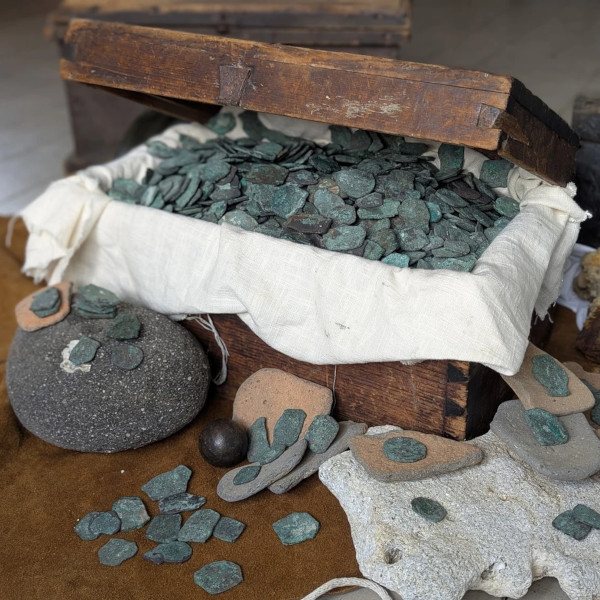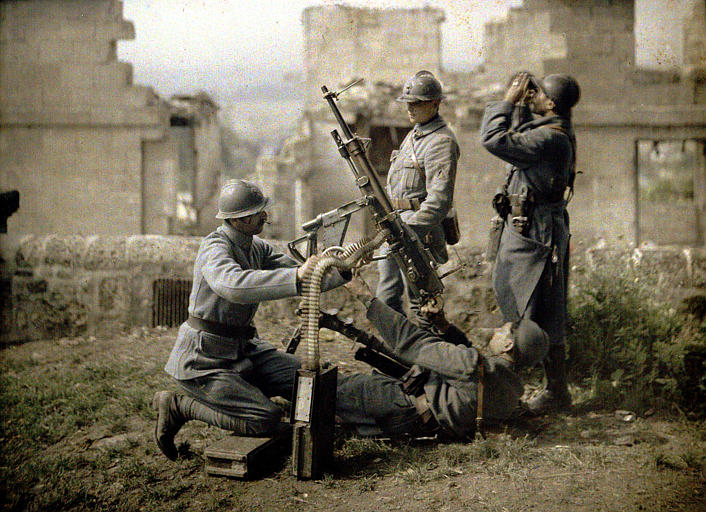
Section of the gunners: four soldiers in the ruins, shooting. France, 1917. Photographer Fernand Cuville.
Over the course of World War I, more than 1 million French soldiers were killed in the line of duty. From 1914 to 1918 as the war raged on, war photographers documented life on the front lines. And, for the first time, they captured color photographs that, when viewed today, bring the struggles of these soldiers to life.
While photographers like Mathew Brady, who documented the American Civil War, had pioneered war photography, his static black and white photos make it difficult to relate to his subject. Instead, the French army employed new technology to give color to their work. In 1903, French brothers Auguste and Louis Lumière patented an early color photography technique—autochrome. Although autochrome was the first commercially successful color photography process, it wasn't until Kodak developed Kodachrome color film in 1935 that color photos became commonplace.
Even with the widespread familiarity of color film, only 50% of American newspapers were using color by 1983, which makes it all the more jarring to see the vast collection of color photos taken by the French Army. Primarily shot by army photographer Paul Castelnau, the rich archive covers everything from life in the trenches to portraits of nurses and doctors. The color, still fairly vivid, is a striking reminder of the men and women who sacrificed during this important period in history.
These color photos document life in the French army over the course of World War I.
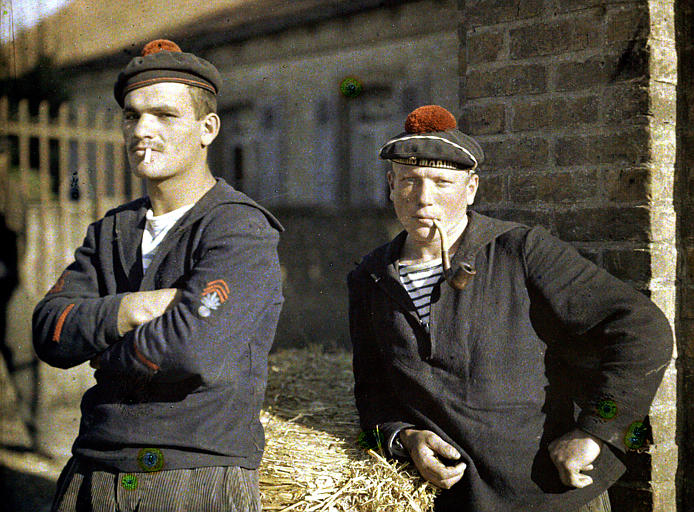
Two marines. Belgium, 1917. Photographer Paul Castelnau.
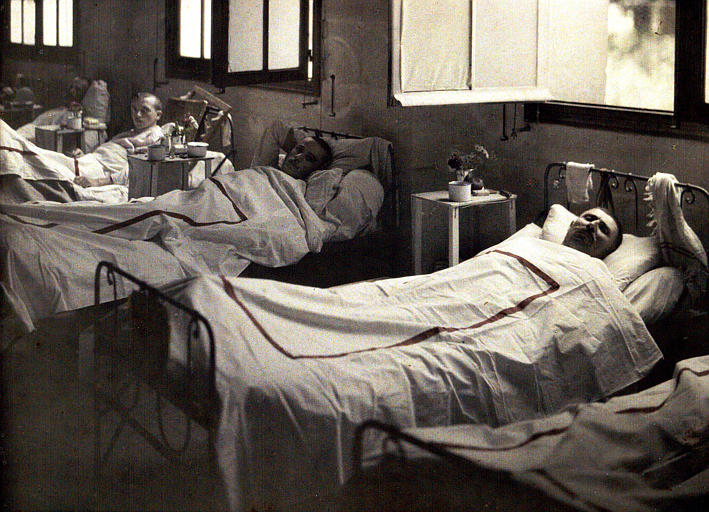
Three patients injured in Laffaux. France, 1917. Photographer Fernand Cuville.
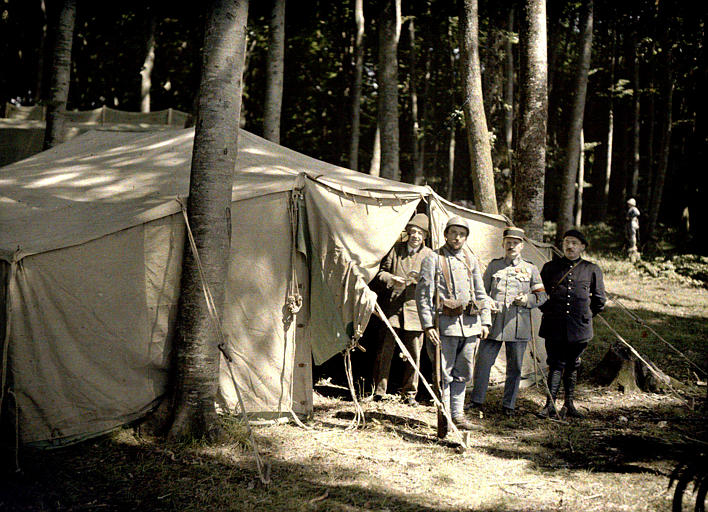
Cloakroom guard of the theater to the armies. 1917, France. Photographer Paul Castelnau.

At the Swiss border: French and Swiss military soldiers separated by fences. France, 1917. Photographer Paul Castelnau.
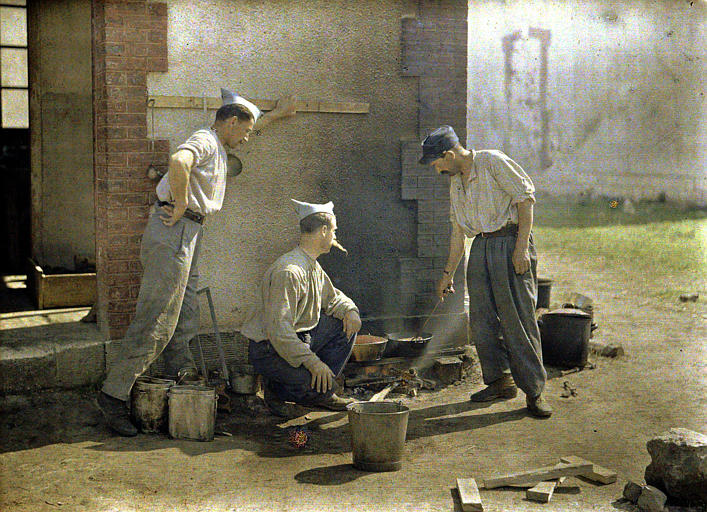
Outdoor Cooking. France, 1917. Photographer Fernand Cuville.
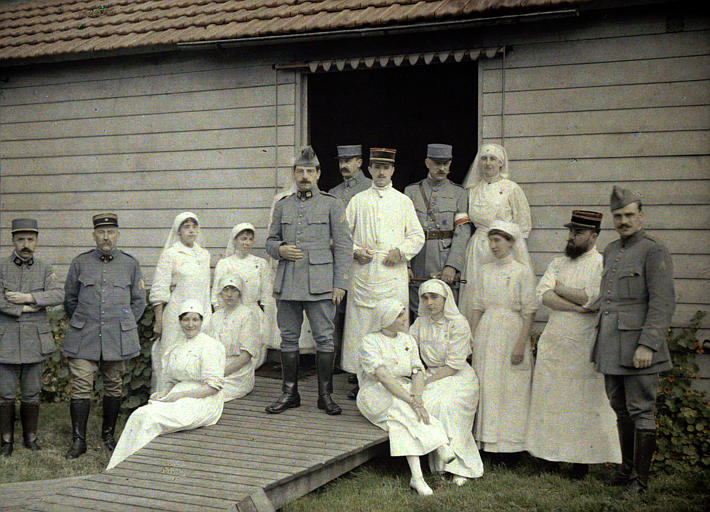
Group at hospital 66: nurses, soldiers, doctors in front of a booth. France, 1917. Photographer Paul Castelnau.

At the Swiss border: Swiss military, behind the fence marking the border. France, 1917. Photographer Paul Castelnau.
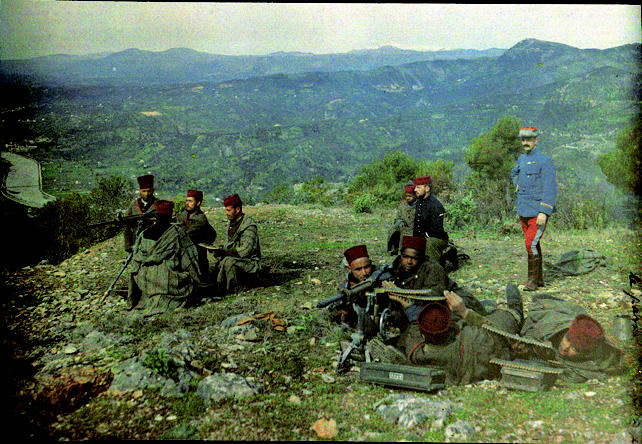
Machine guns protecting the passage of a convoy in the territories of the extreme south. Tunisia, 1916. Photographer Albert Samama Chikli.
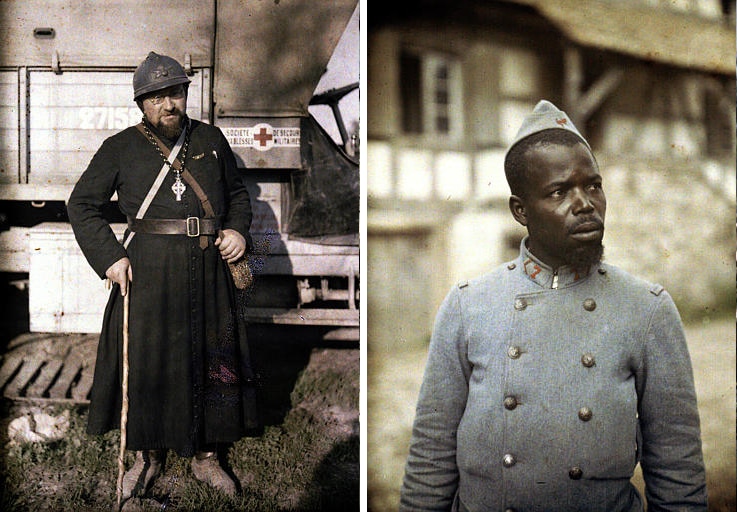
Left: Abbé Even, chaplain of the 51st division, military helmet. Belgium, 1917. Photographer Paul Castelnau | Right: Sar Amadou, Wolof Class 1900, of the Seventh Regiment. France, 1917. Photographer Paul Castelnau.
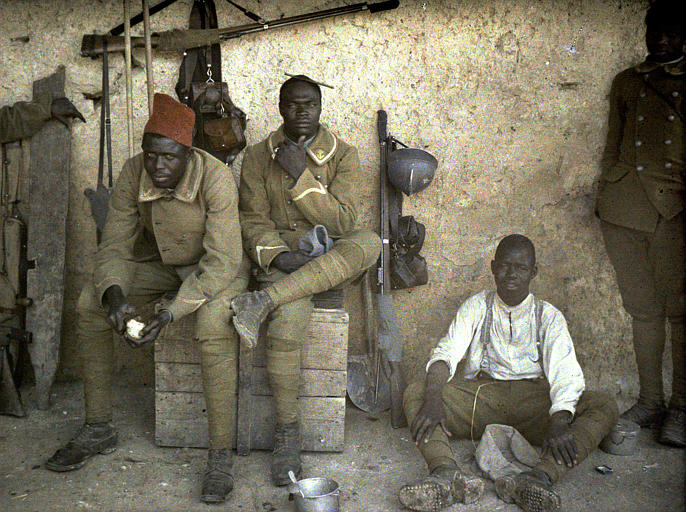
Four Senegalese soldiers. France, 1917. Photographer Paul Castelnau.
Army photographers used the still fairly new autochrome technique to bring color to their photographs.
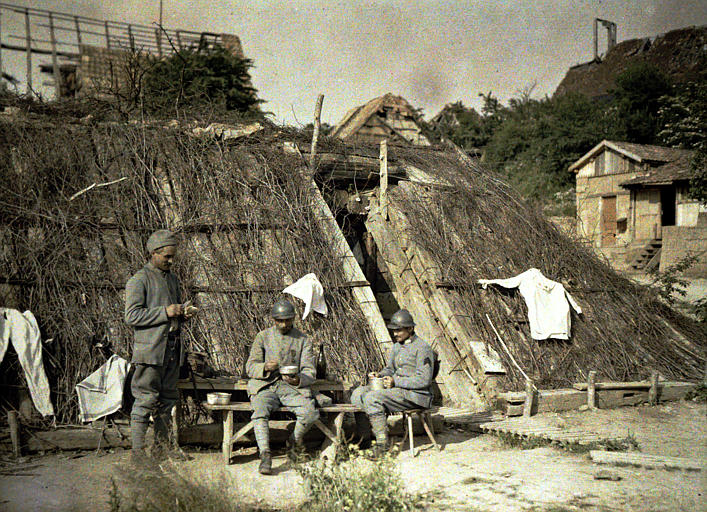
Shelter. France, 1917. Photographer Paul Castelnau.
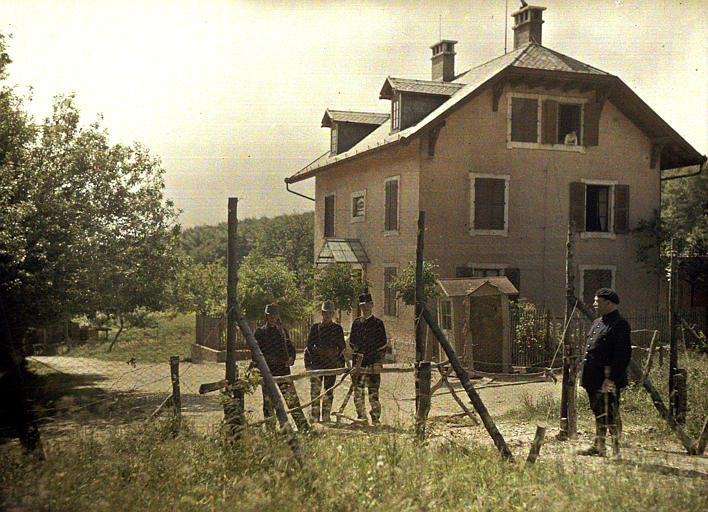
At the Swiss border: Swiss soldiers, a French soldier and a woman at his window. Switzerland, 1917. Photographer Paul Castelnau.

Left: Sale of newspapers on a stall. France, 1917. Photographer Paul Castelnau. | Right: Three young nurses in uniform in front of city hall. Belgium, 1917. Photographer Paul Castelnau.
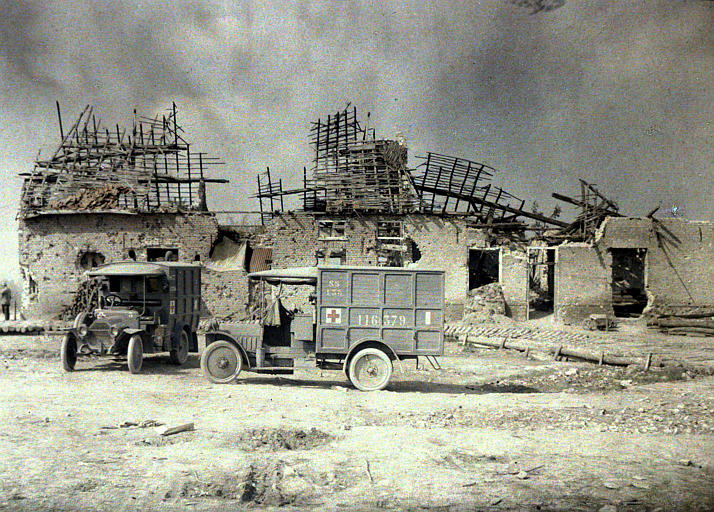
Ambulance cars waiting for the wounded. Belgium, 1917. Photographer Paul Castelnau.
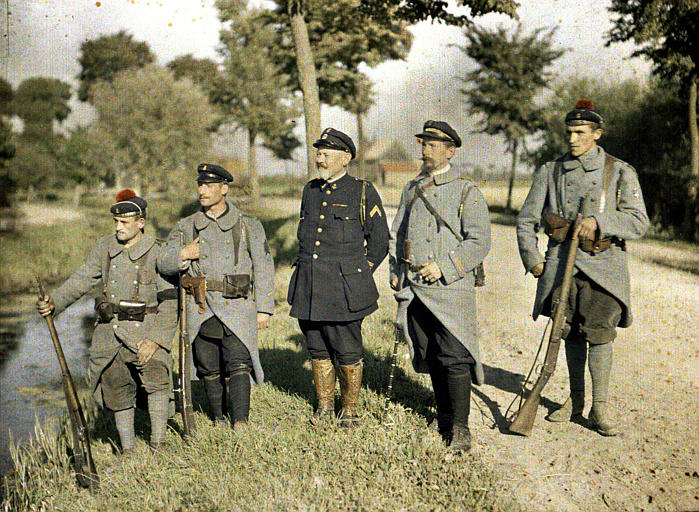
The heroes of Drie Grachten: five soldiers, officers and soldiers. Belgium, 1917. Photographer Paul Castelnau.
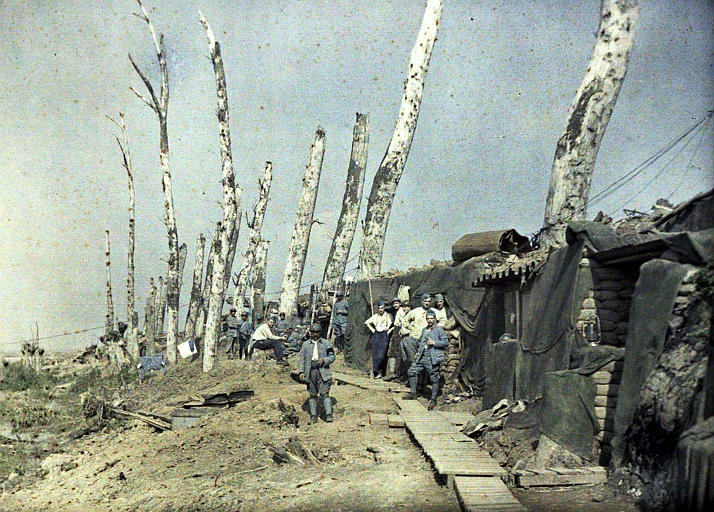
French lines at Het Sas, mutilated trees (French military, sheeted shelters, sandbags, storm lamp) Belgium, 1917. Photographer Paul Castelnau.

Surgical Center. Belgium, 1917. Photographer Paul Castelnau.
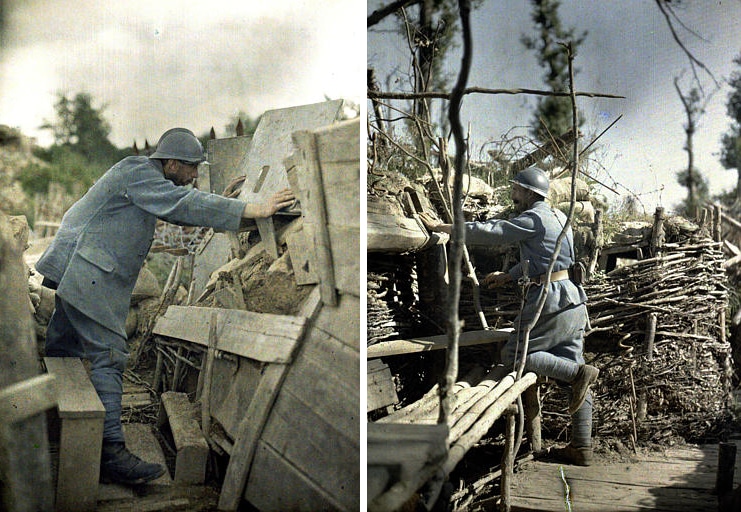
Left: French military observation: a watchman at lockstation 26. France, 1917. Castelnau. | Right: Front line trench, observer: trench support work. France, 1917. Photographer Paul Castelnau.

Three soldiers with conjunctivitis poisoned on March 23, 1918; medical photography. France, 1918. Photographer Aubert.
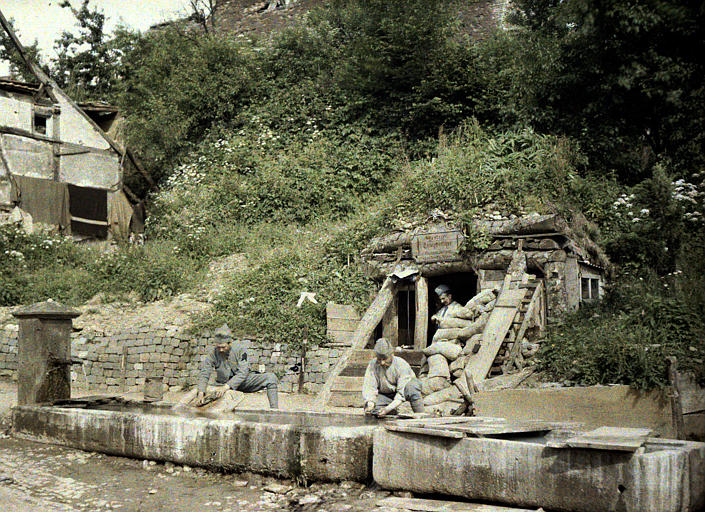
PC phone station protected by sandbags. French soldiers doing their laundry in the troughs of a fountain. France, 1917. Photographer Paul Castelnau.





















































































